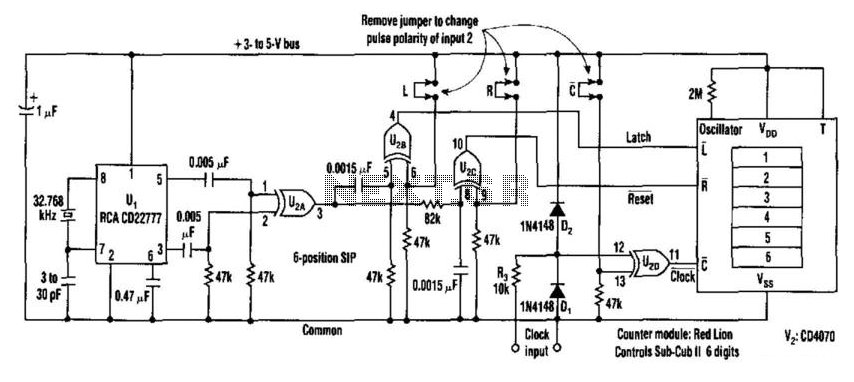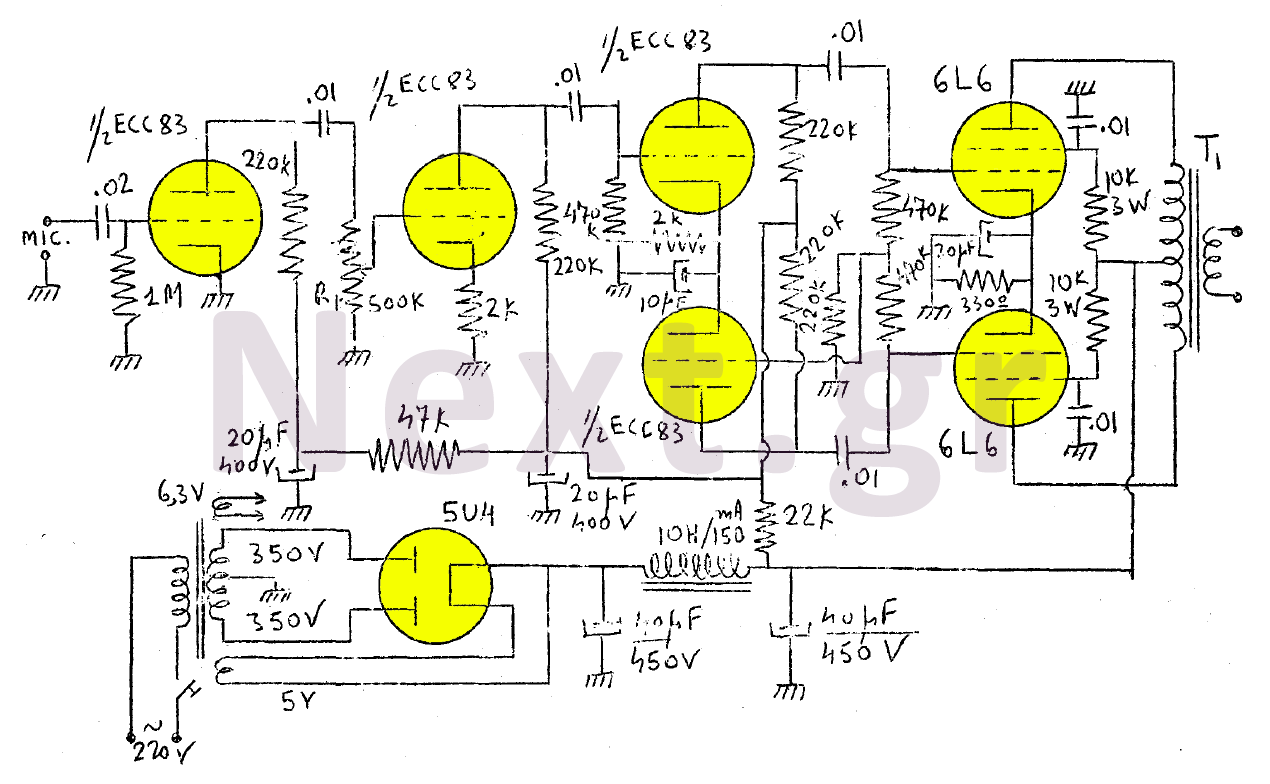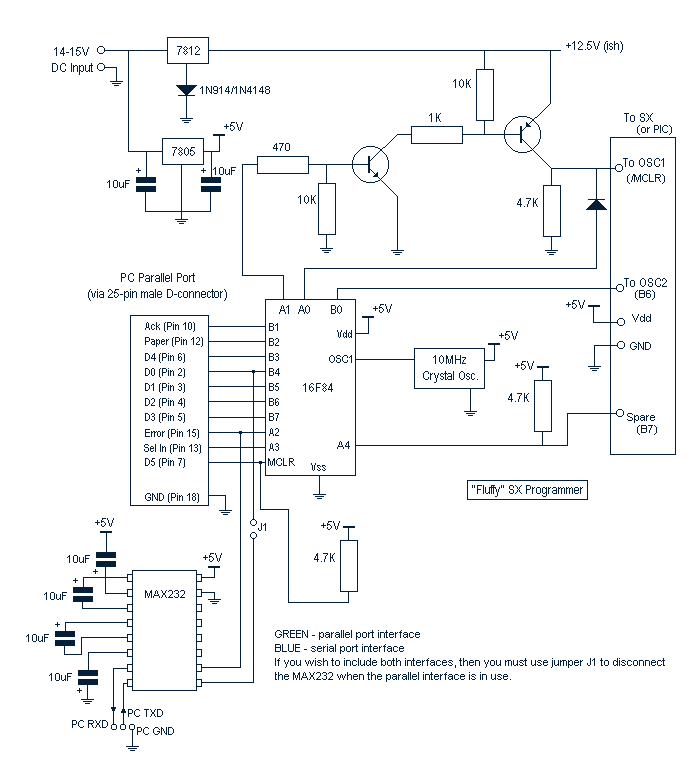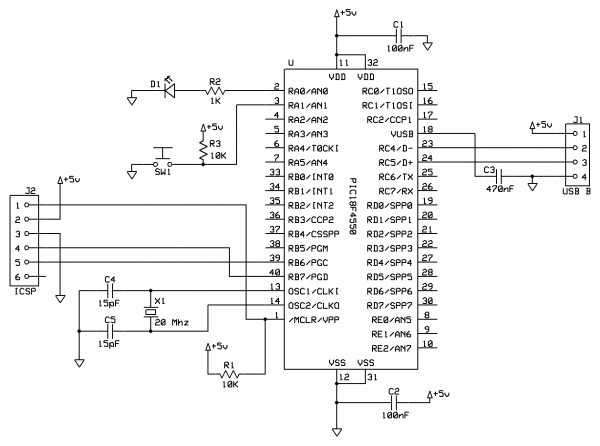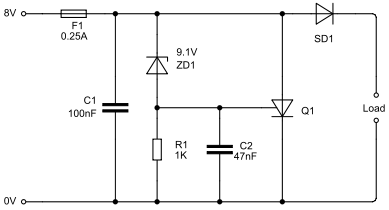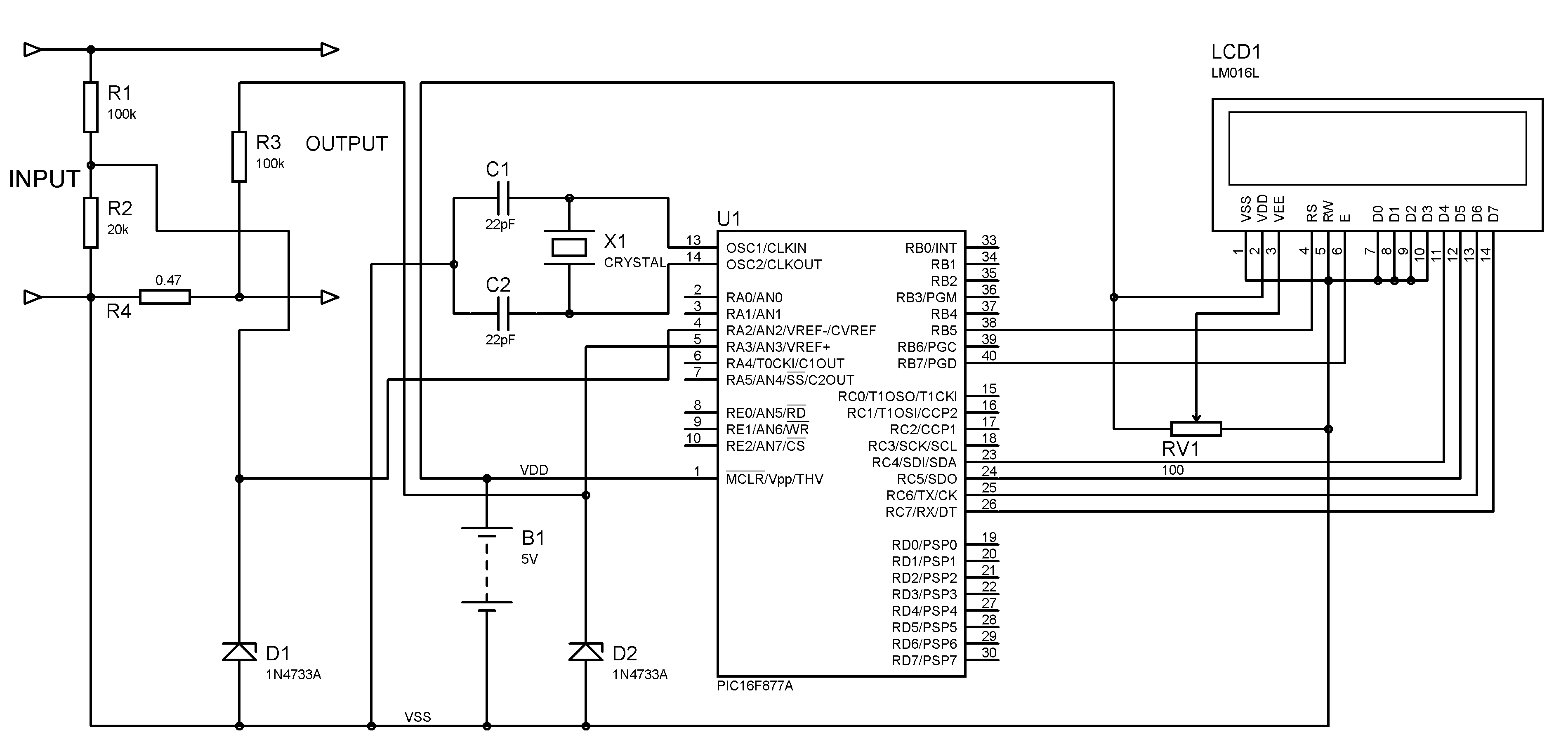
Frequency counter 400Hz to 50MHz with PIC 16F84
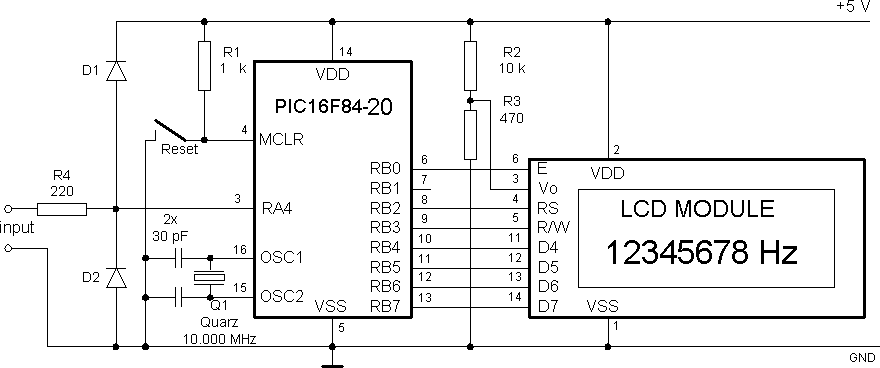
The circuit comprises a Microchip PIC 16F84 microcontroller and an LCD text module. The author claims that this counter can measure frequencies ranging from 400 Hz to 50 MHz. A faster version, the 20 MHz PIC 16F84A-20I/P, was utilized, which successfully counted an 80 MHz oscillator output.
The design features a Microchip PIC 16F84 microcontroller, which serves as the core processing unit for frequency measurement. This microcontroller is equipped with a 14-bit instruction set and operates at a maximum clock speed of 20 MHz, allowing for efficient data processing and control tasks. The LCD text module provides a user-friendly interface for displaying frequency measurements in real-time.
The circuit is capable of measuring a wide frequency range, from 400 Hz to 50 MHz, making it suitable for various applications in electronics and telecommunications. The use of the PIC 16F84A-20I/P variant enhances performance, enabling it to accurately count signals up to 80 MHz. This is achieved through careful programming of the microcontroller, which involves configuring input capture features to sample the oscillator output effectively.
To facilitate the operation, the circuit includes necessary passive components such as resistors and capacitors for signal conditioning, as well as power supply decoupling. The microcontroller interfaces with the LCD module using a parallel communication protocol, allowing for direct data transfer and display updates.
The schematic design should include connections for the microcontroller's oscillator circuit, which typically involves an external crystal or resonator to ensure stable clock performance. Additionally, input pins must be configured to receive frequency signals, with appropriate protection measures against voltage spikes or noise.
Overall, this frequency counter circuit represents a robust solution for high-frequency measurements, leveraging the capabilities of the PIC microcontroller and an LCD display for effective visualization of results.It consists only from Microchip PIC 16F84 cpu and LCD text module. Author states that this counter is capable metering frequencies from 400Hz to 50MHz. I used faster, 20MHz version of 16F84A-20I/P, and it managed to count 80MHz oscillator output. 🔗 External reference
The design features a Microchip PIC 16F84 microcontroller, which serves as the core processing unit for frequency measurement. This microcontroller is equipped with a 14-bit instruction set and operates at a maximum clock speed of 20 MHz, allowing for efficient data processing and control tasks. The LCD text module provides a user-friendly interface for displaying frequency measurements in real-time.
The circuit is capable of measuring a wide frequency range, from 400 Hz to 50 MHz, making it suitable for various applications in electronics and telecommunications. The use of the PIC 16F84A-20I/P variant enhances performance, enabling it to accurately count signals up to 80 MHz. This is achieved through careful programming of the microcontroller, which involves configuring input capture features to sample the oscillator output effectively.
To facilitate the operation, the circuit includes necessary passive components such as resistors and capacitors for signal conditioning, as well as power supply decoupling. The microcontroller interfaces with the LCD module using a parallel communication protocol, allowing for direct data transfer and display updates.
The schematic design should include connections for the microcontroller's oscillator circuit, which typically involves an external crystal or resonator to ensure stable clock performance. Additionally, input pins must be configured to receive frequency signals, with appropriate protection measures against voltage spikes or noise.
Overall, this frequency counter circuit represents a robust solution for high-frequency measurements, leveraging the capabilities of the PIC microcontroller and an LCD display for effective visualization of results.It consists only from Microchip PIC 16F84 cpu and LCD text module. Author states that this counter is capable metering frequencies from 400Hz to 50MHz. I used faster, 20MHz version of 16F84A-20I/P, and it managed to count 80MHz oscillator output. 🔗 External reference
Warning: include(partials/cookie-banner.php): Failed to open stream: Permission denied in /var/www/html/nextgr/view-circuit.php on line 713
Warning: include(): Failed opening 'partials/cookie-banner.php' for inclusion (include_path='.:/usr/share/php') in /var/www/html/nextgr/view-circuit.php on line 713
